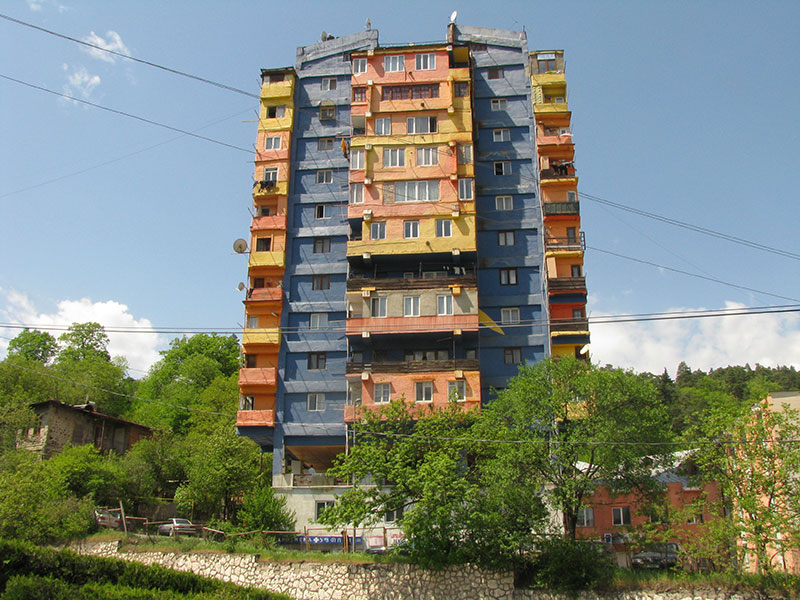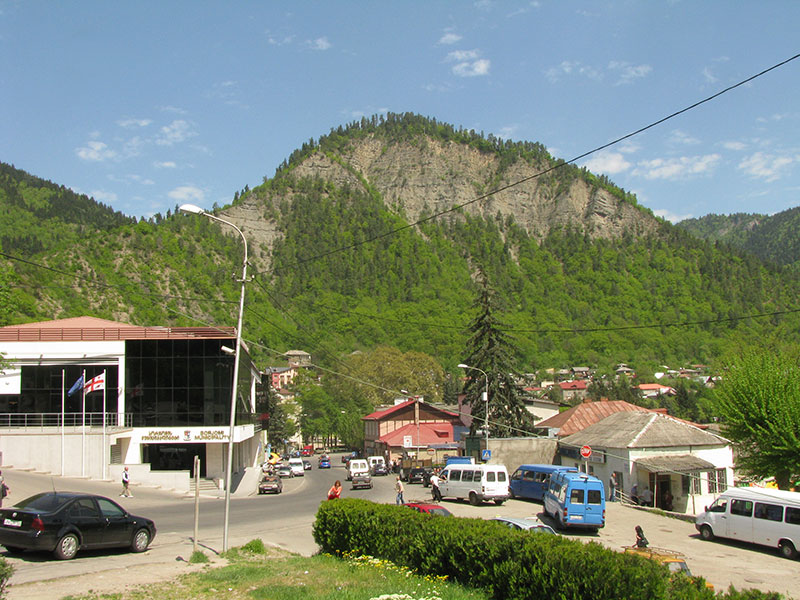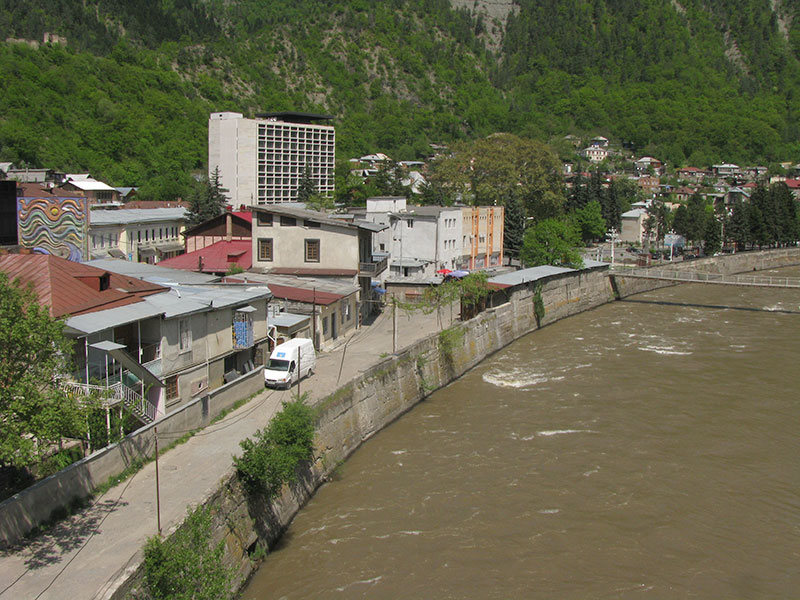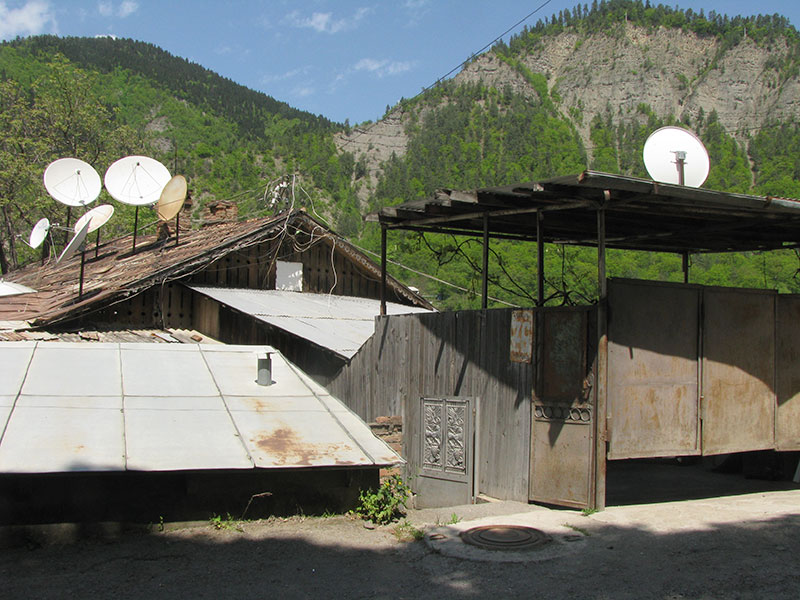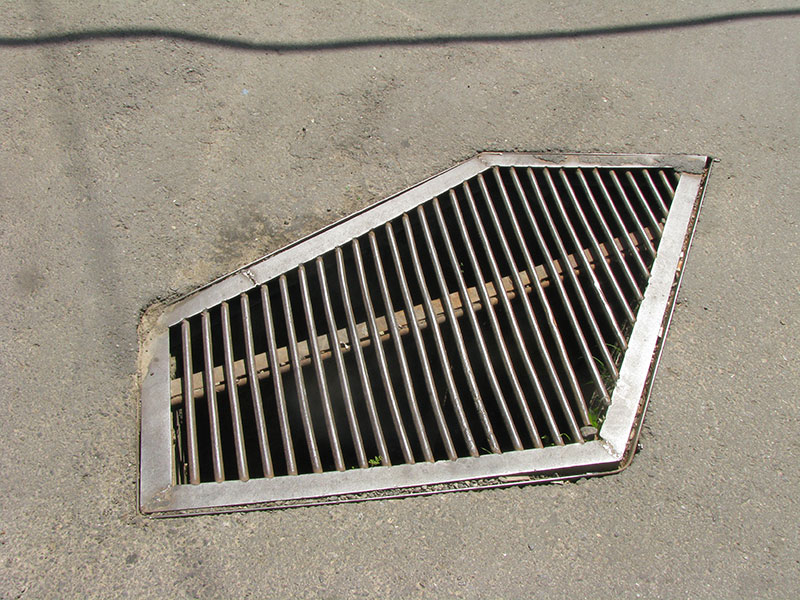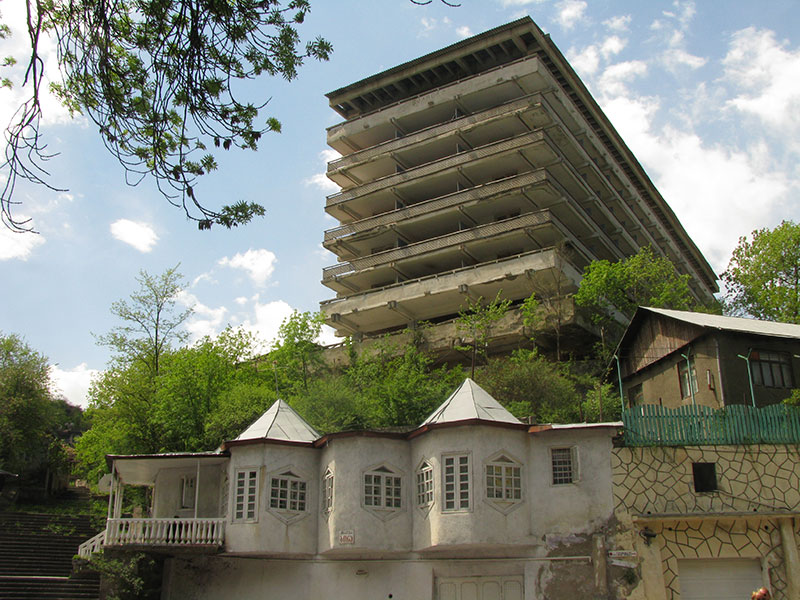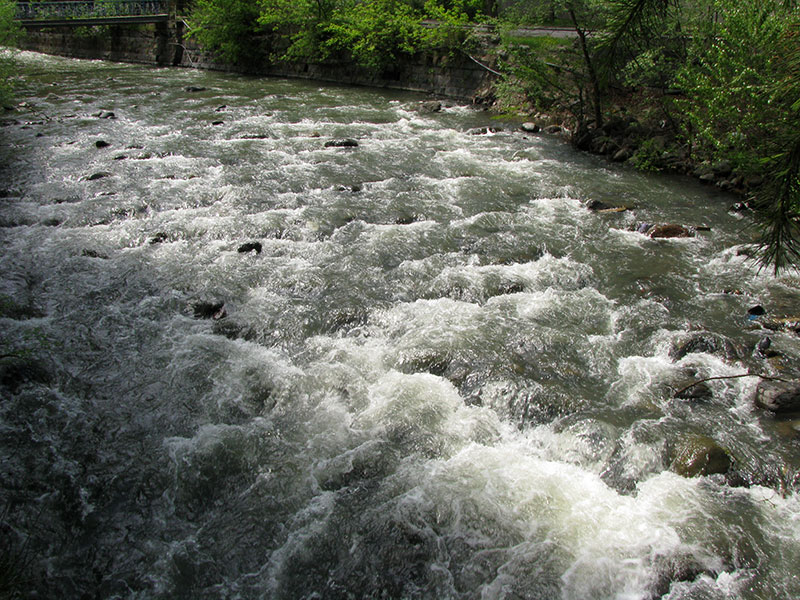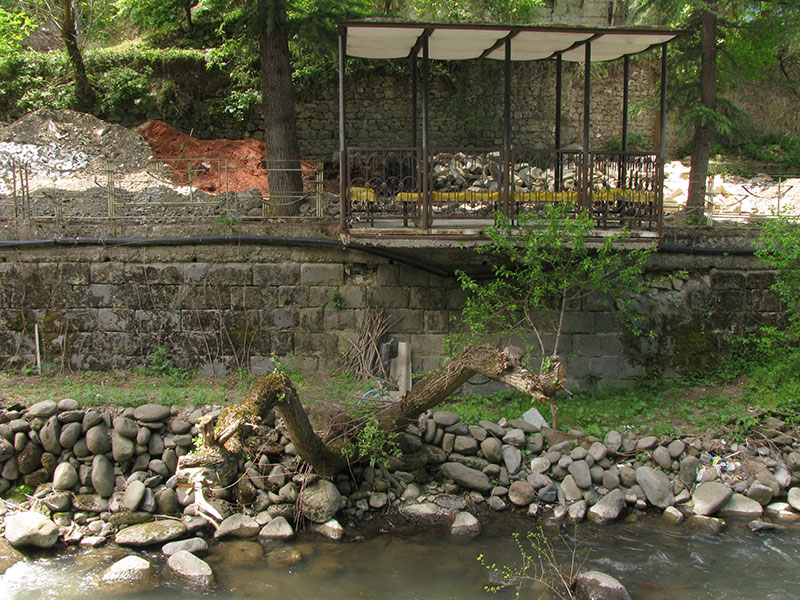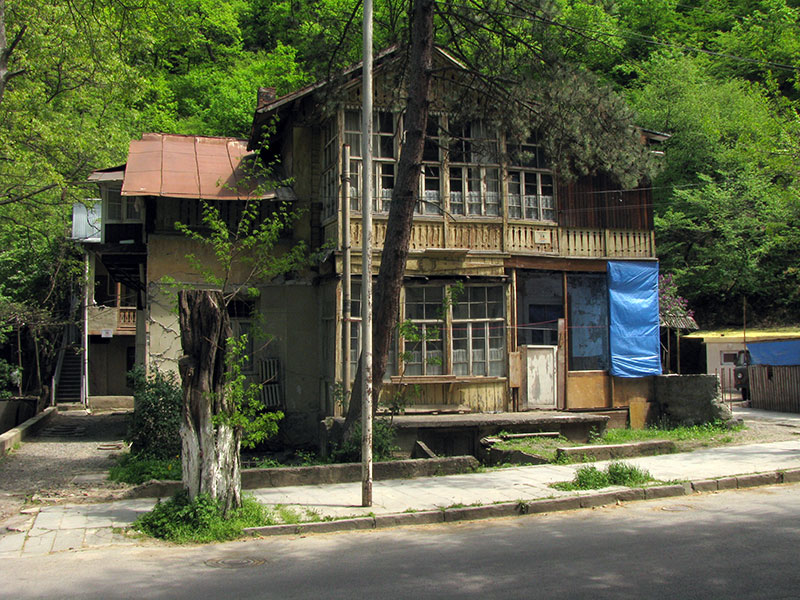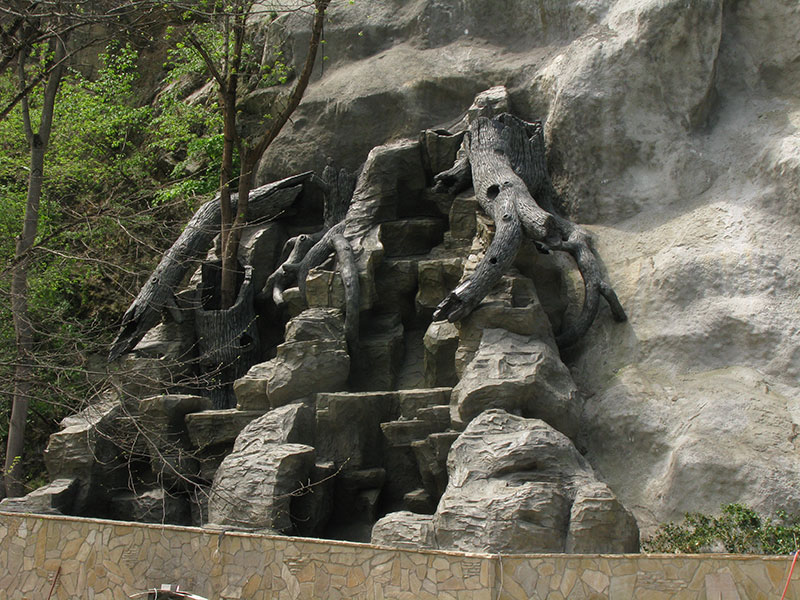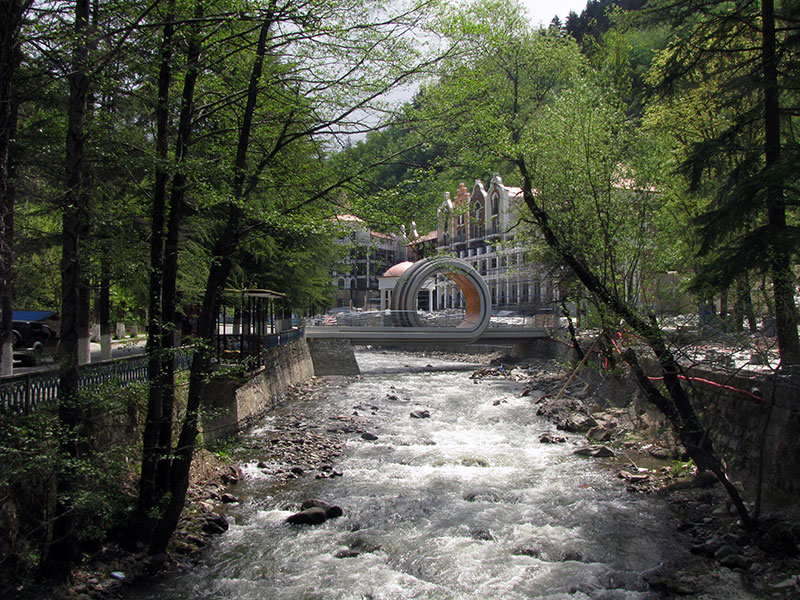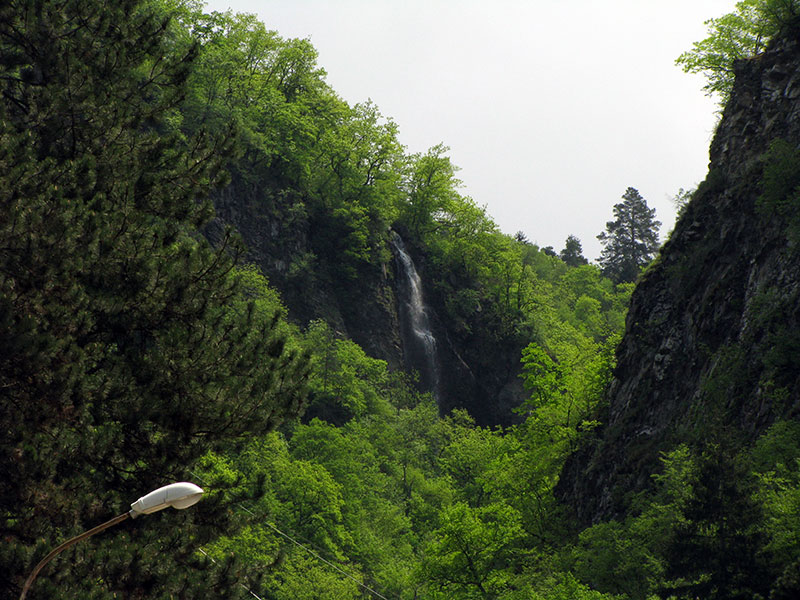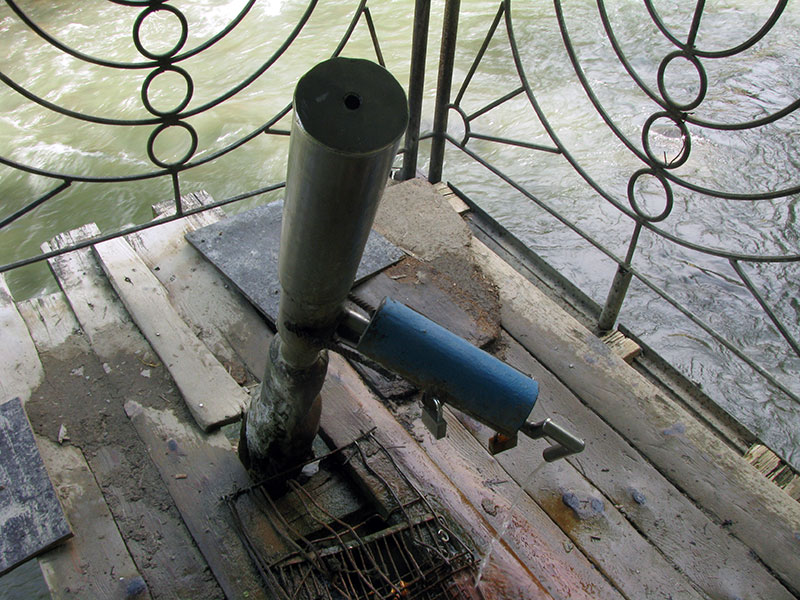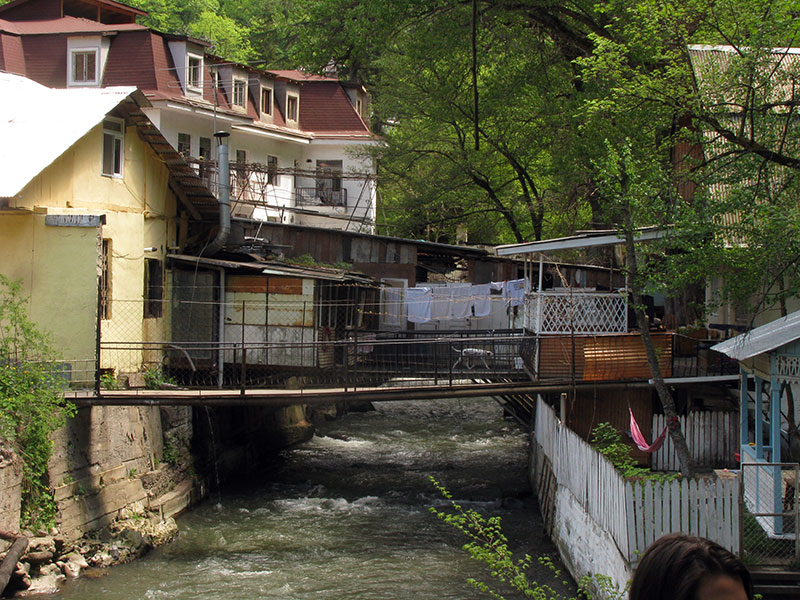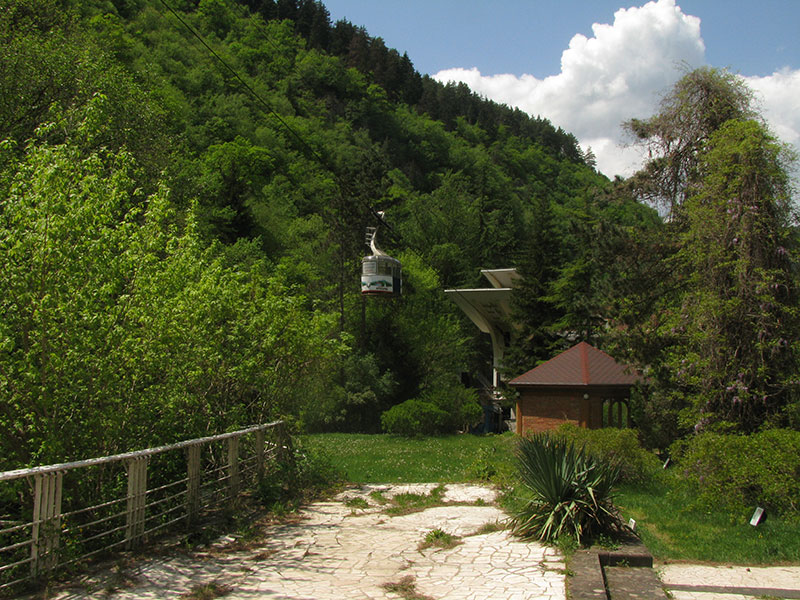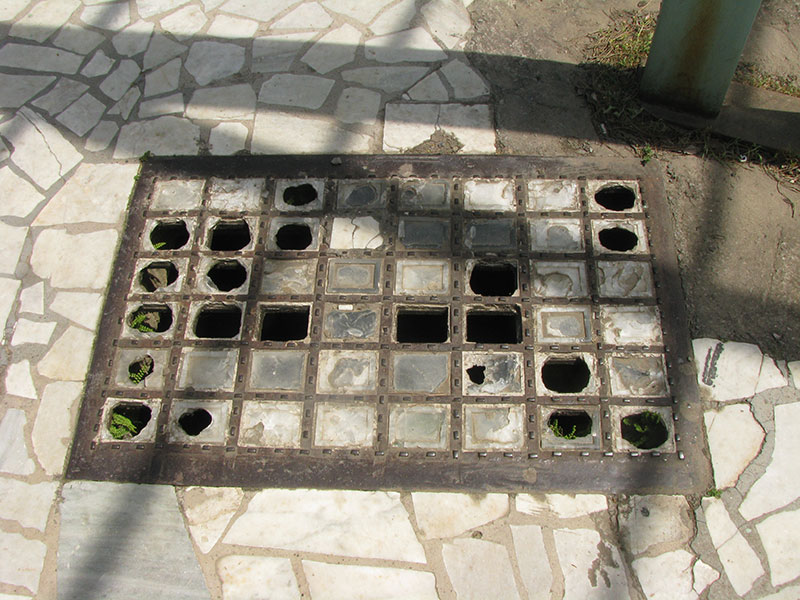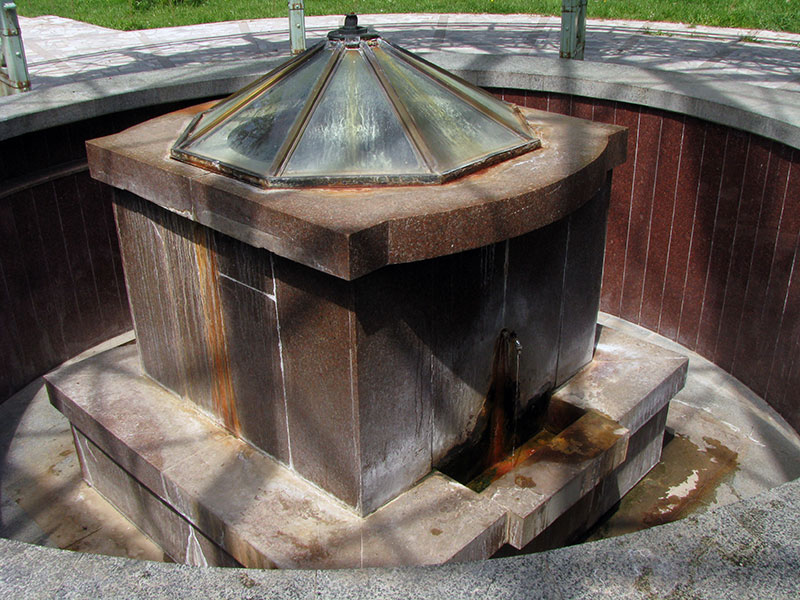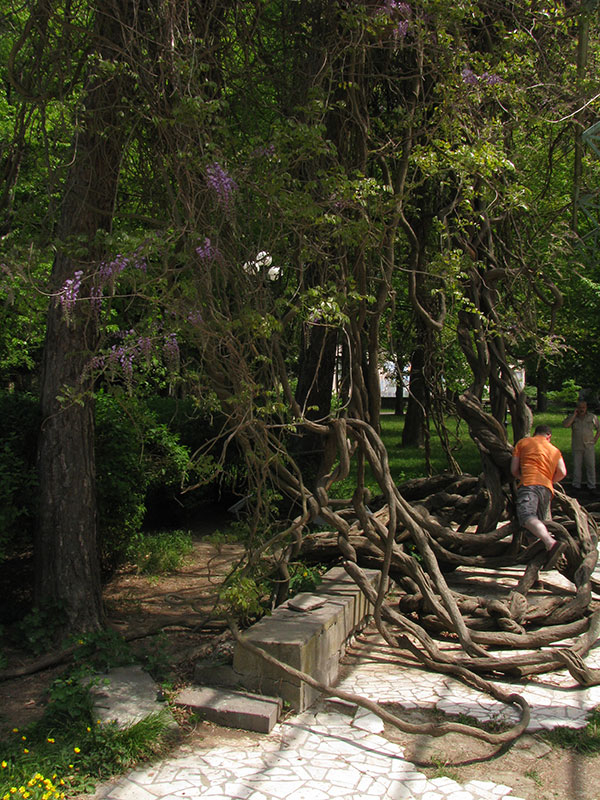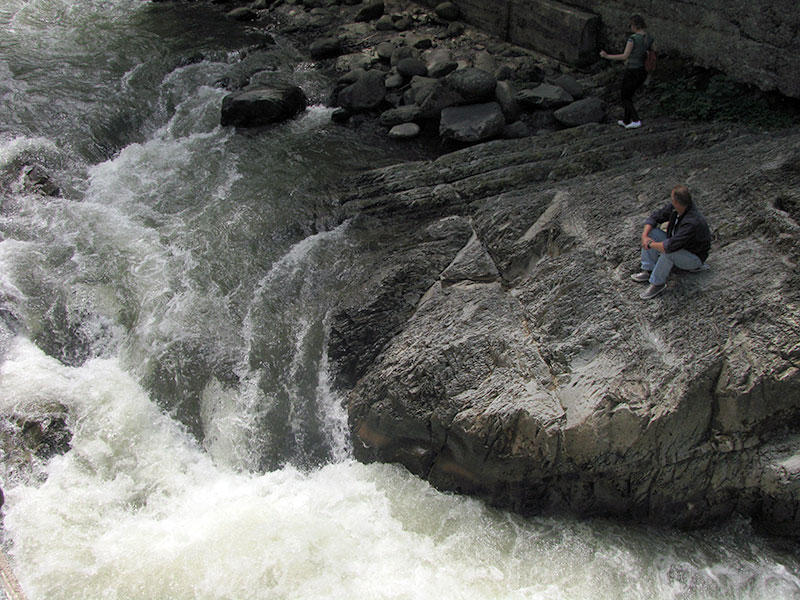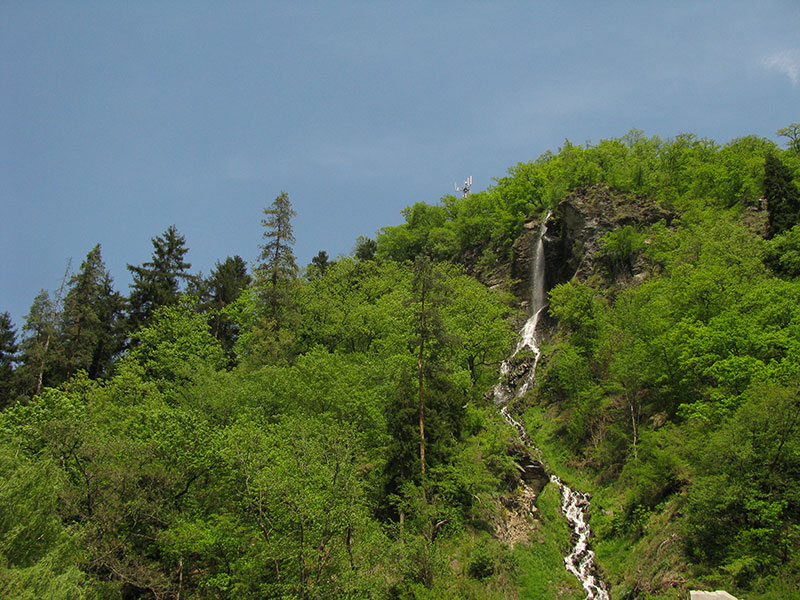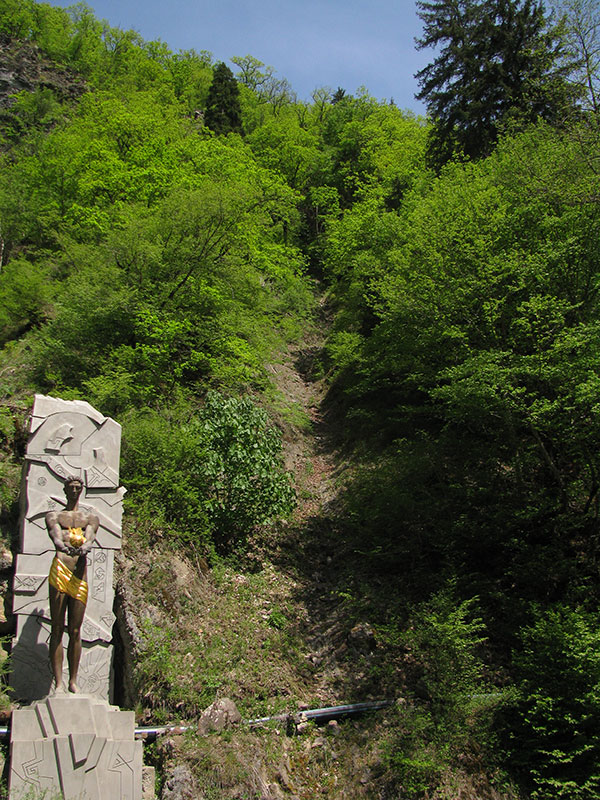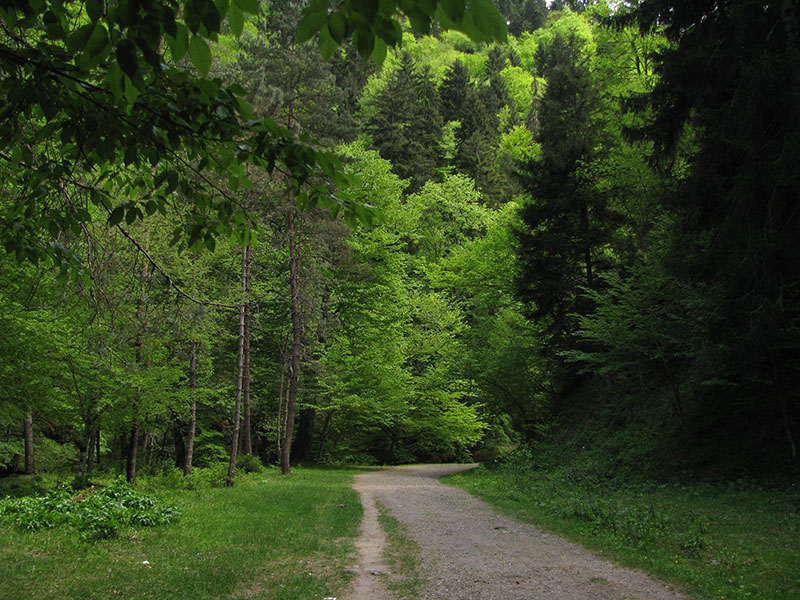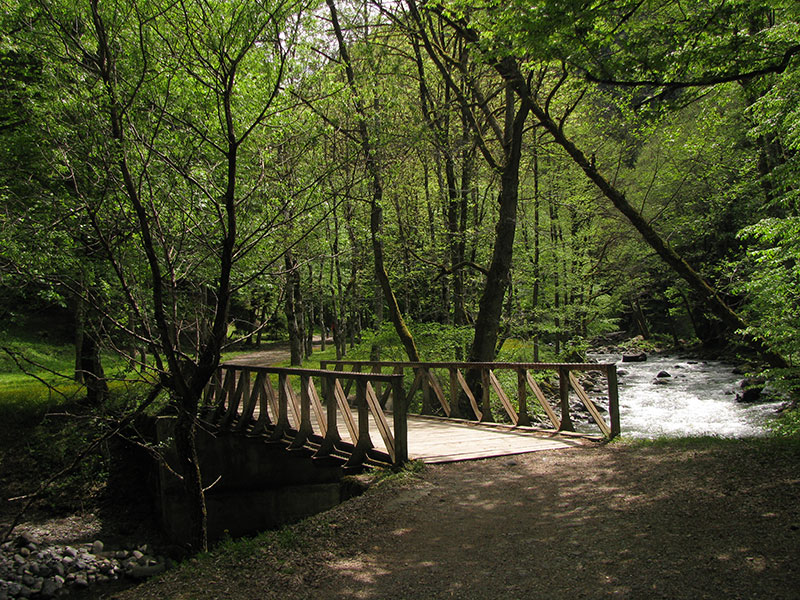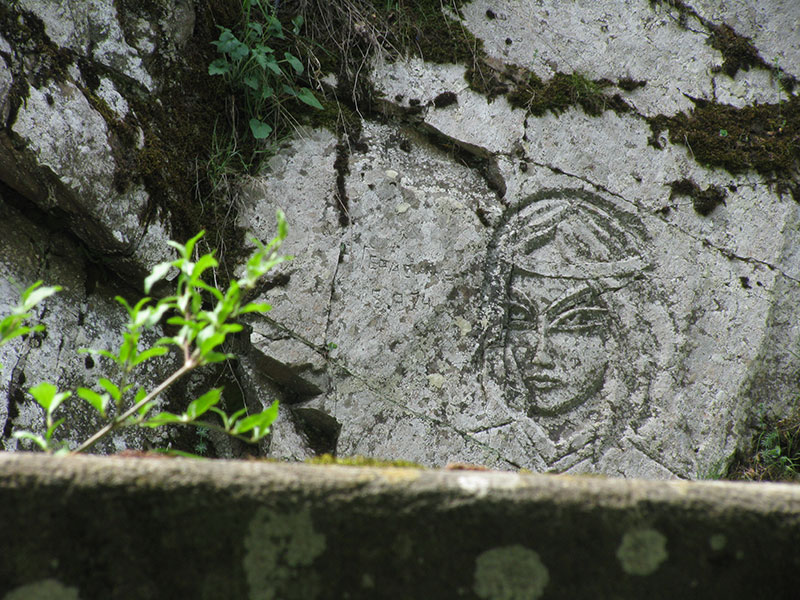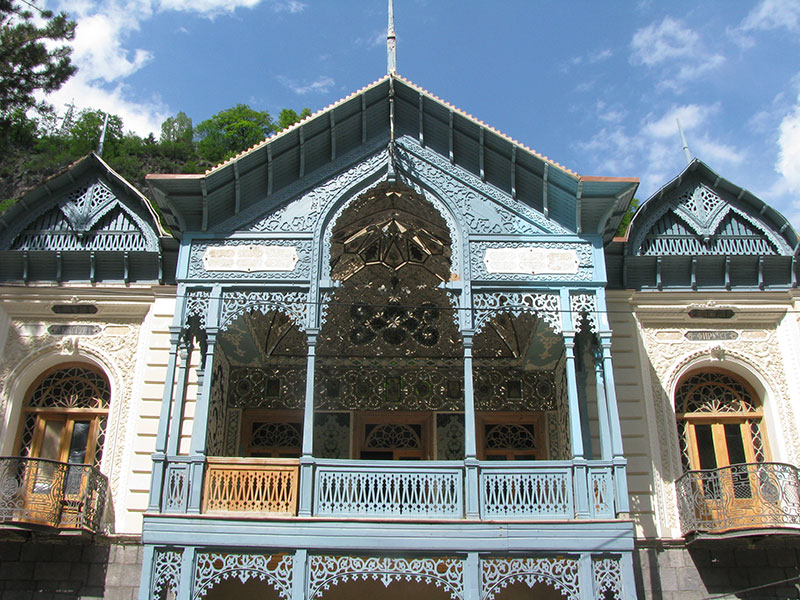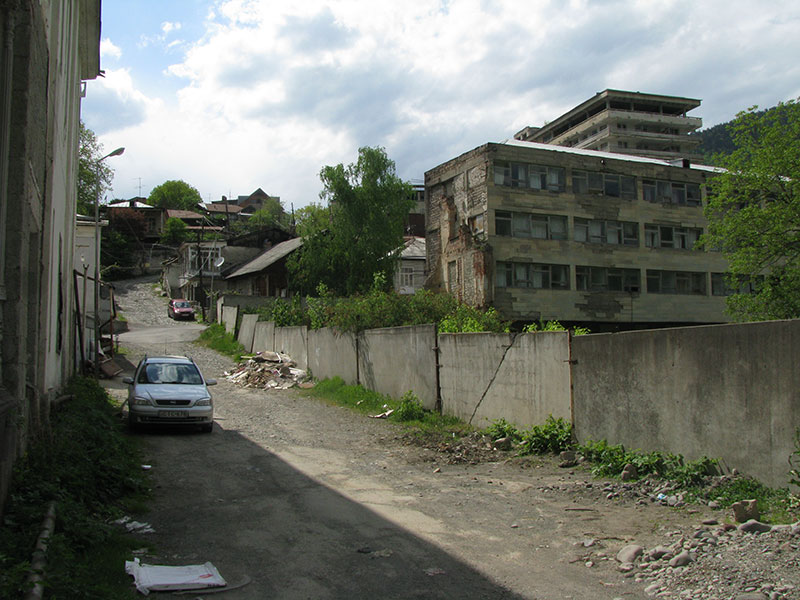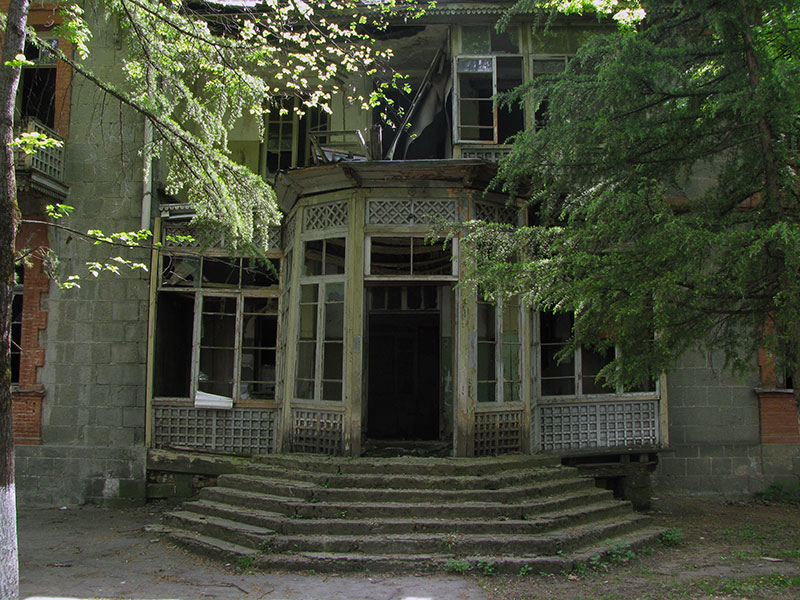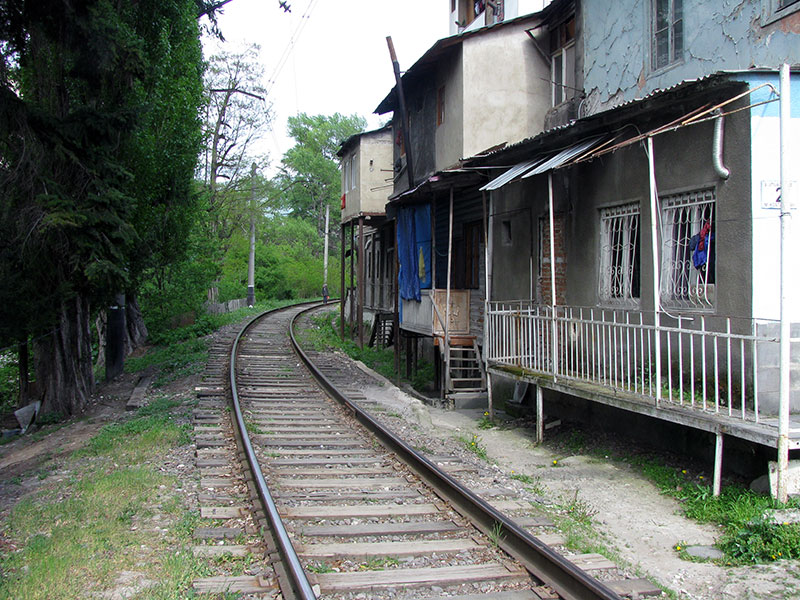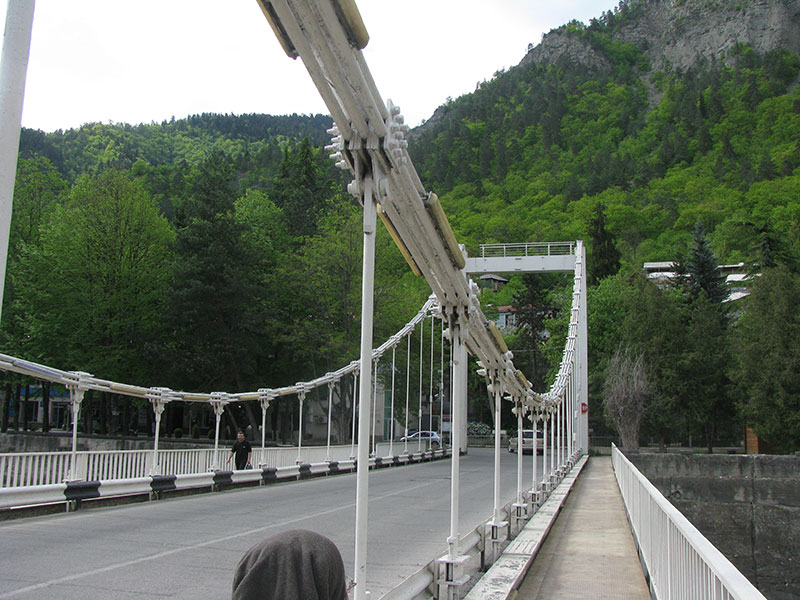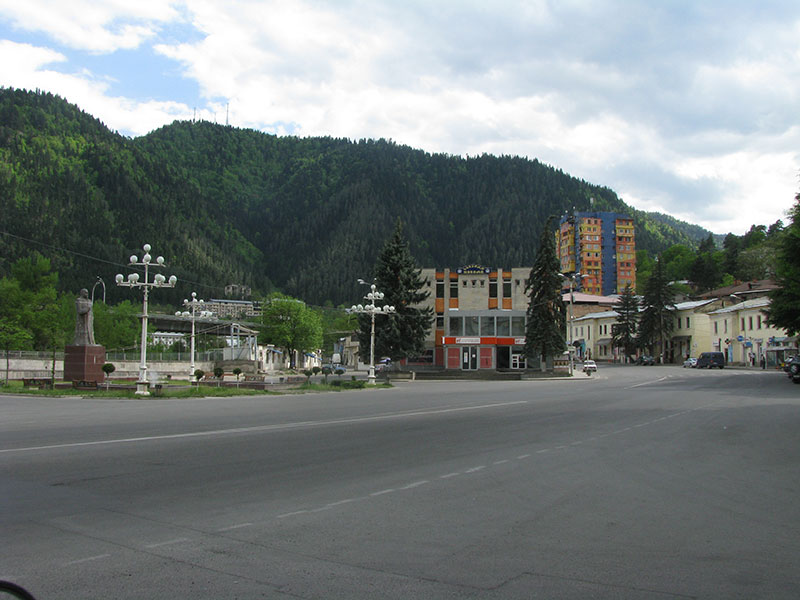Half of a day in Borjomi: from bus to park and back.
Marshrutka bus from Tbilisi to Borjomi departs from a bus station that is merged together with an open market near metro station Didube. The cost of the trip was 8 lari and took a bit more than two hours. Bus driver was smoking tobacco behind the wheel and drove dangerously. The buses operate from 09:00 to 18:00, as told by one of the drivers.
Borjomi meets the bus passengers incoming from Tbilisi with this colourful living house,
and mountains covered with trees.
The big river flowing through Borjomi is the same river Kura (Georgians call it Mtkvari) that flows in Tbilisi. Despite the distance of 200 kilometers, the color of water is the same.
We are heading towards the park through a part of town with old houses.
An manhole having an irregular form due to Georgia not being a flatland.
The old hotel «Tbilisi» gathers the dust.
There is a smaller river on the way to the park. My guess was that it must be called Borjomi. I was wrong, but close. The correct name is Borjomula.
The riverbanks have nice hanging pergolas built into the embankment.
The street that goes along Borjomula has old houses that look fragile, not ready for the slightest blow of the wind.
An expensive hotel is being built as close to the park, as it is possible. The developers have tried to improve the surrounding beauty with a sculpture in the canyon wall.
A pedestrian bridge resembling the aerobatic inside loop.
I looked ahead and saw a waterfall.
People passing by were talking about the so called «cold water spring» and that it is somewhere here. We turned away from the street, crossed the river and had to wait in a queue — we had to taste it, hadn't we? The cold water spring resembles the barrel of a machine gun, or, at the very least, the telescope directed onto the floor.
Several private footbridges can be seen from the cold source. A dog ran back and forth there.
Entry to the park was free of charge. A building to the right of the entrance turned out to be the lower station of a ropeway, which, unfortunately, was closed, because its operating season was yet to be started ten days later — on May 15-th.
An old manhole with glass squares. Perhaps, it leads to the hot source.
The hot source is decorated and cannot be seen directly. The water is not hot — it is only slightly warm.
This plant was a favorite among the visitors.
Rapids on the picturesque and roaring Borjomula.
We have reached that waterfall on the side of the canyon.
There is a statue near the bottom of the waterfall. The waterfall had changed its path in recent years, as it is hinted by lack of vegetation on a vertical line a few meters away.
I ran upstream for some time. The park ends soon. There were several merry-go-rounds near the end of the park, guarded by a couple of bored folks.
The gravel path goes further up the canyon. Probably, to the very end and beyond that. I'll check that out when I come to Borjomi again.
The canyon has beautiful mixed forest on its walls.
There are more bridges on the path, because the river does bend.
I did not go further because I had no time. Shame.
This face engraved in the rock is illuminated at nighttime. This artwork has been created in 1974.
We are leaving the park. Passing a house with a mirror mosaic.
We are going to look on the town itself a little bit. So far, it looked decaying.
Something was slowly decaying in a tiny park.
Someone's lovely house is standing dangerously close to the railway. If I was a kid living here, I'd be permanently excited.
A suspension bridge over Kura.
Here's the center of the town among the mountains.
